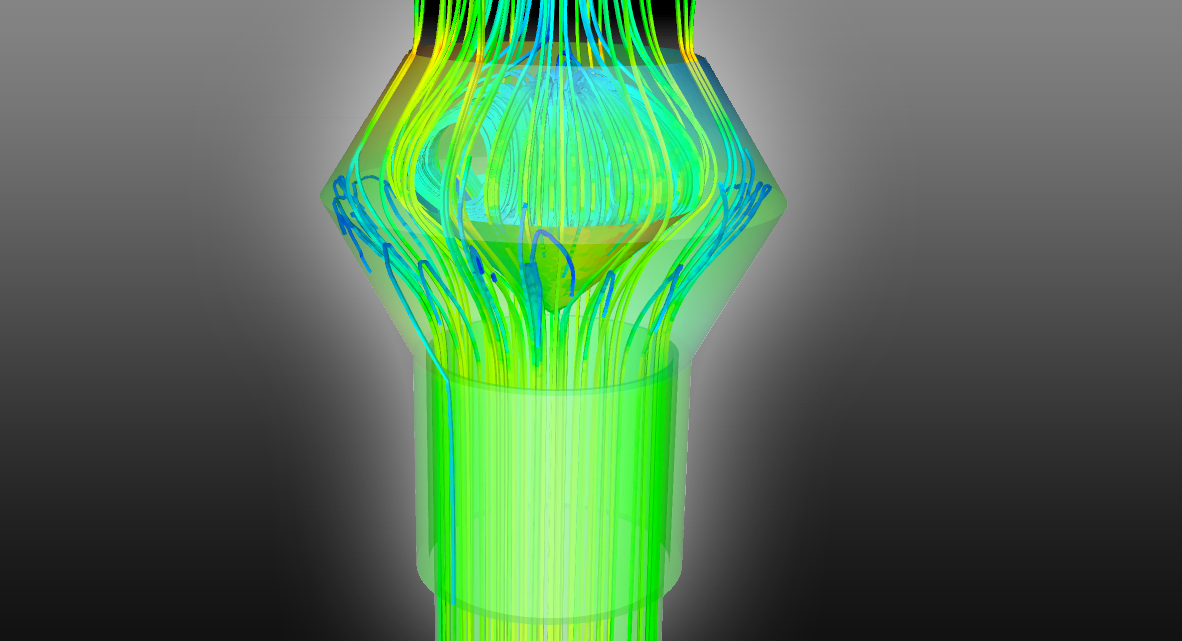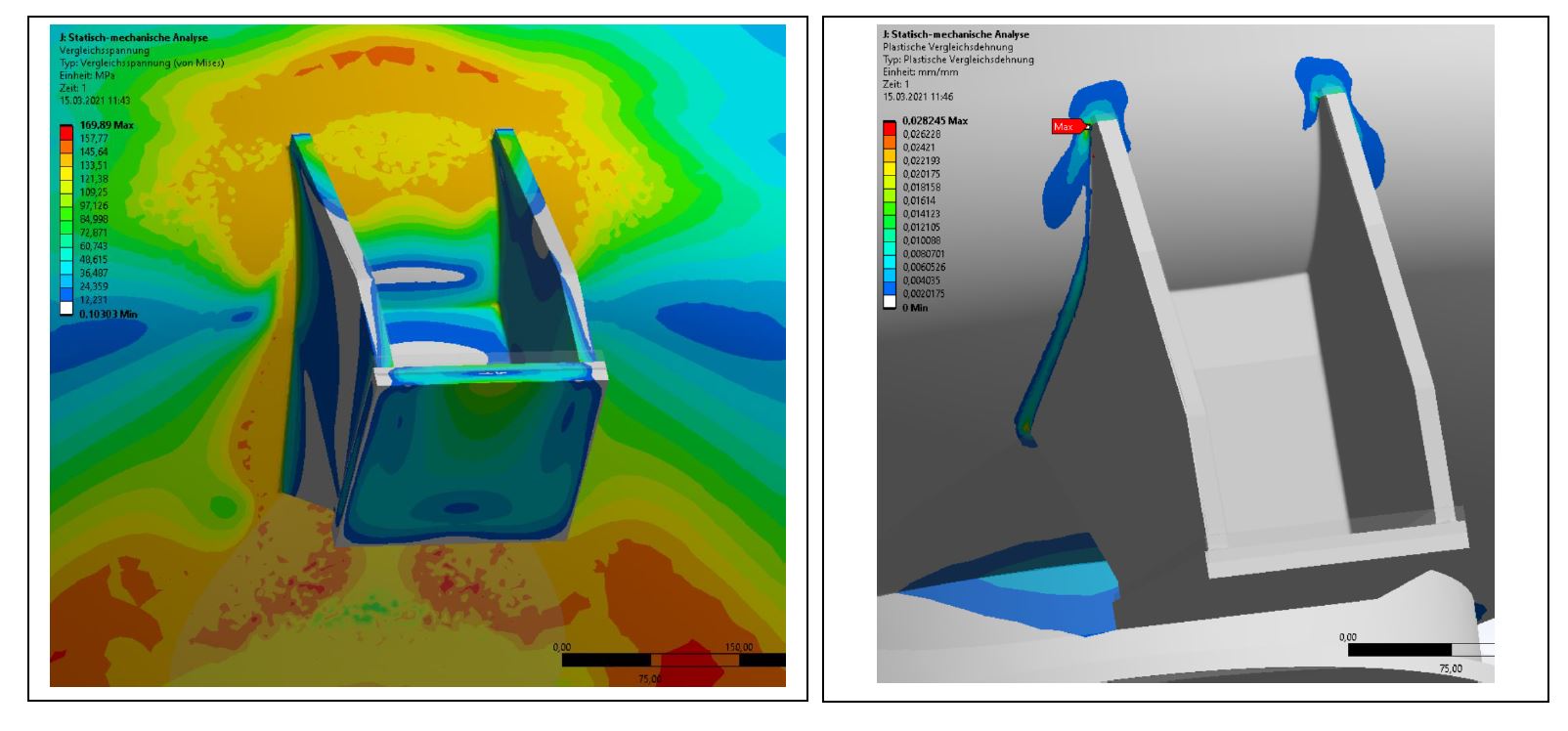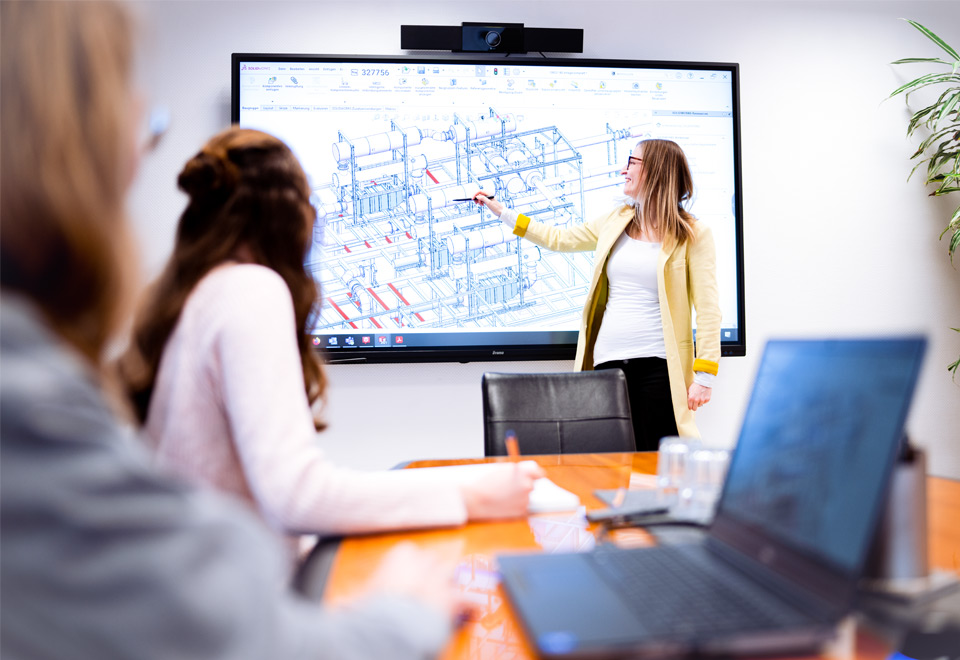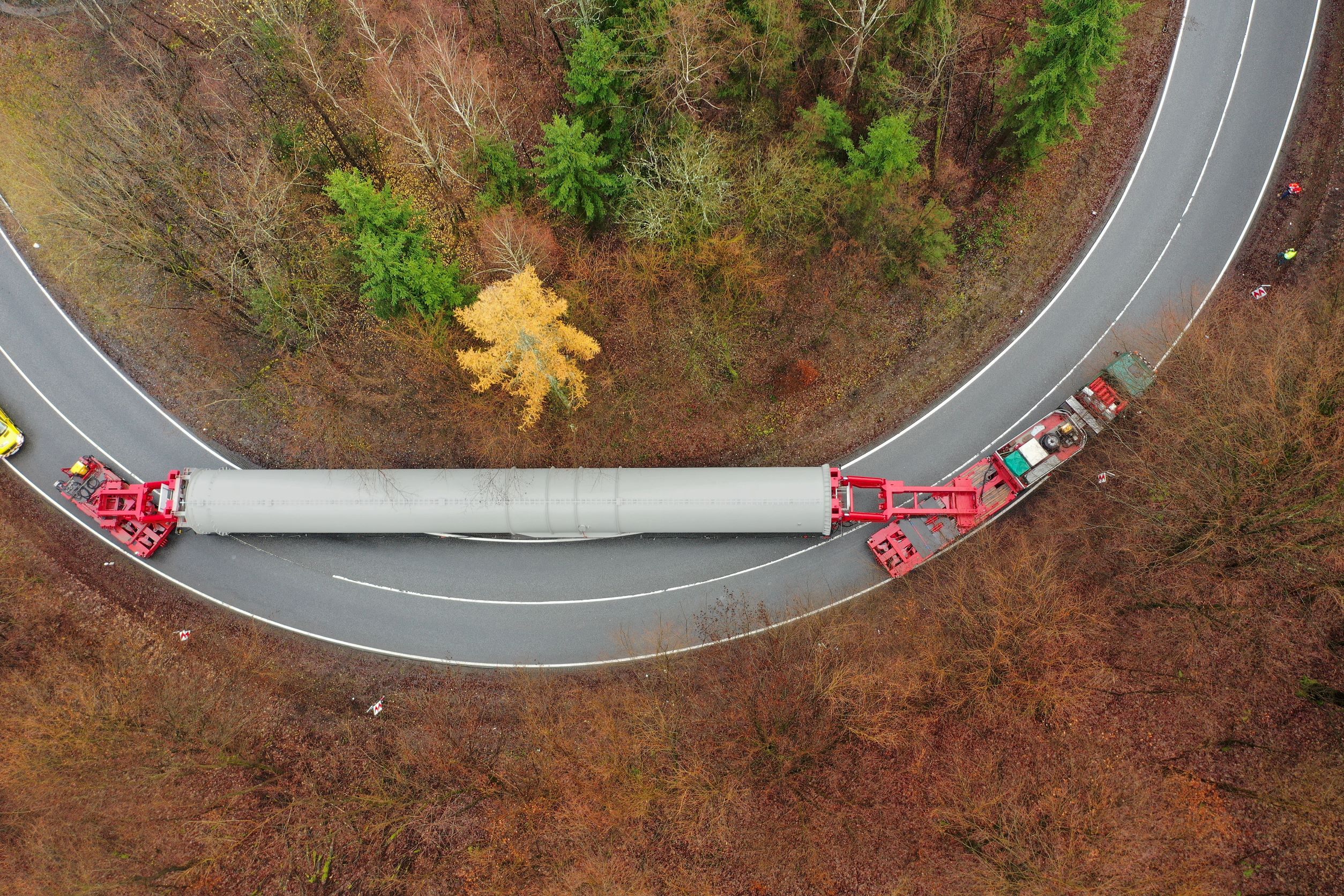Planning
Step by step
We accompany you right from the offer phase. This includes 3D models, CFD analyses, preparation of sound level balances, static calculations to determine loads for further investigations (foundation designs, load application in building or ship structures), pressure loss calculations of the exhaust components, or the review of retrofitting options for silencer/SCR combinations within existing plants.

CFD flow analysis
The combination of analytical design, empirical application knowledge, and numerical calculation, enables optimal planning for the implementation of complex exhaust and noise insulation systems. Thanks to an in-house CFD department (program ANSYS-Fluent) and competent partners, fluidic analyses are carried out for corresponding fields of application. The fluid mechanical findings provide valuable insights into the flow process and make emerging pressure, flow, and heat profiles visible.

Structural analysis, FEM calculation
We use FEM simulations from ANSYS to calculate the physical behavior of assemblies, components, and materials under different boundary conditions for our customers even before the project is executed.It can be used to predict behavior, exclude damage-prone components, optimize weight, and conduct tests virtually. This enables precise predictions and insights into all technical systems and processes.

3D Design
Our technicians and engineers at Nießing develop, design and construct our products using state-of-the-art technology.All the designs are carried out using state-of-the-art workstations with SOLIDWORKS 3D CAD solutions. This way, detailed 3D models are used to continuously optimize customer-specific products in all development phases.

Assembly planning
To ensure that the project runs smoothly, transport and assembly planning needs to be started as early as possible. In addition to transport engineering, this also includes appropriate crane analyses in order to be able to optimally move even larger/longer components to the assembly site.
